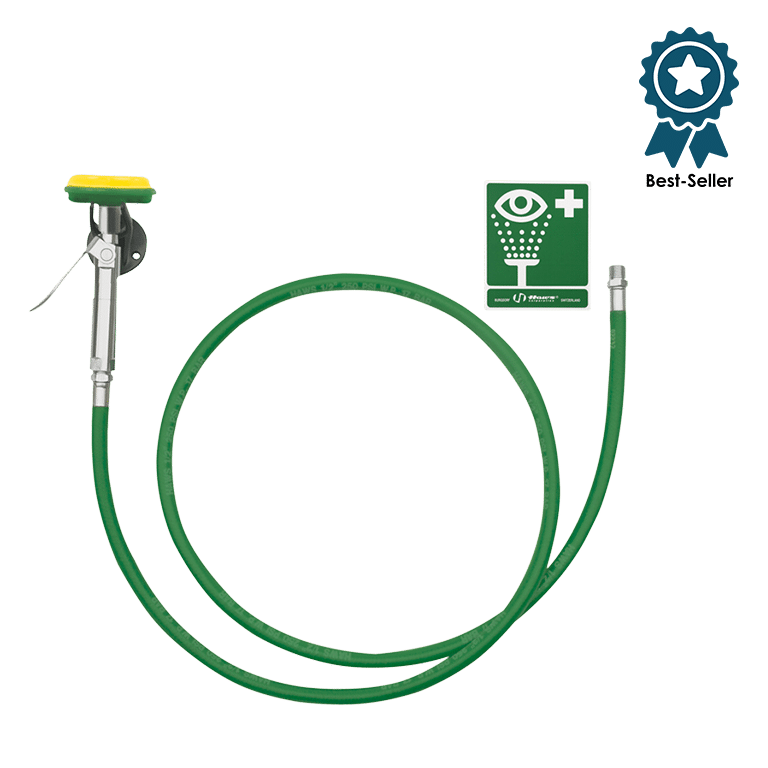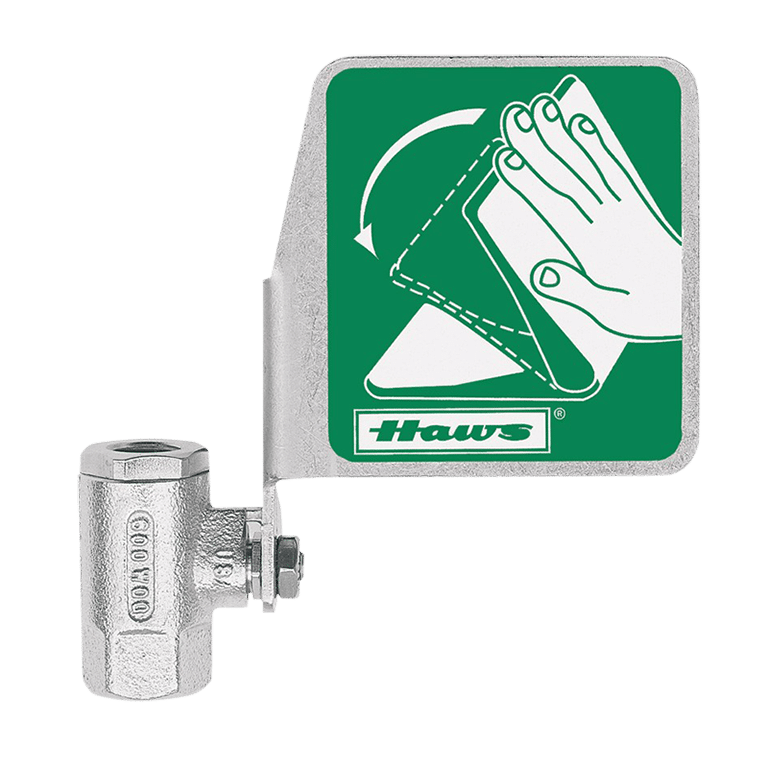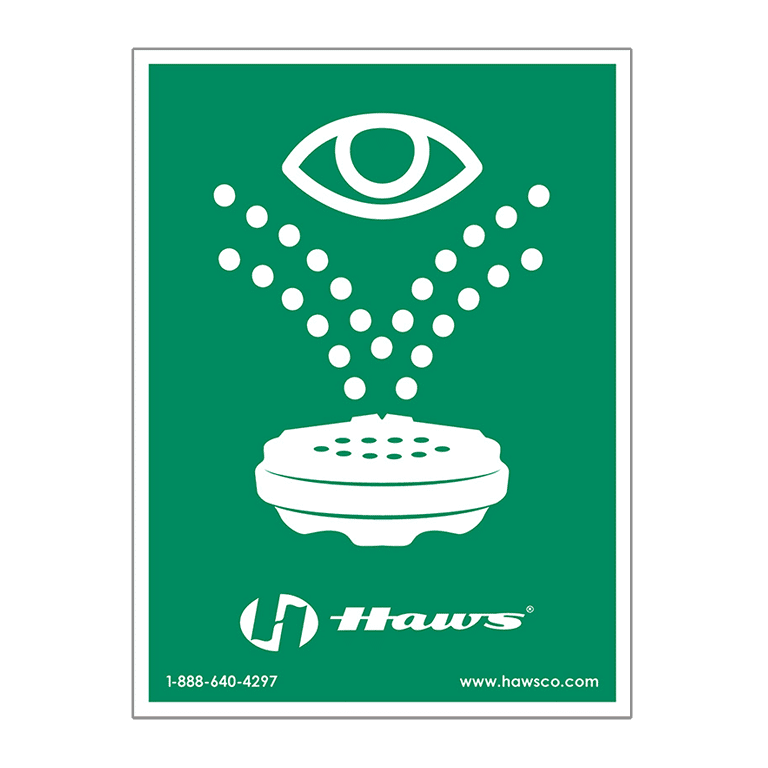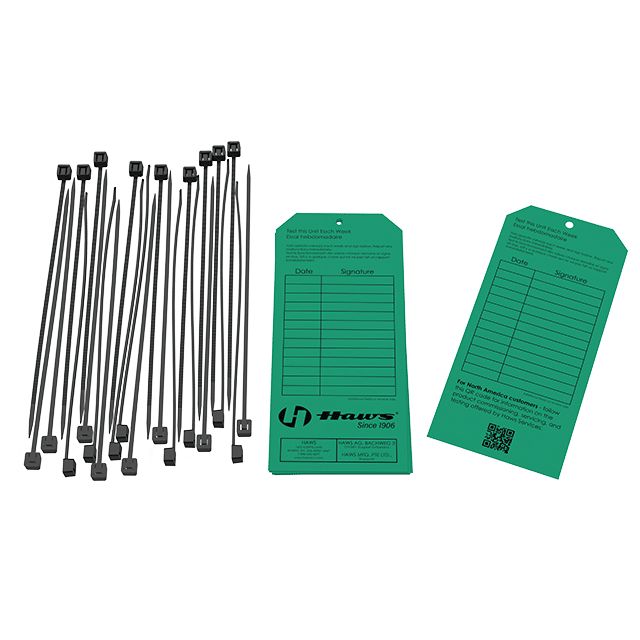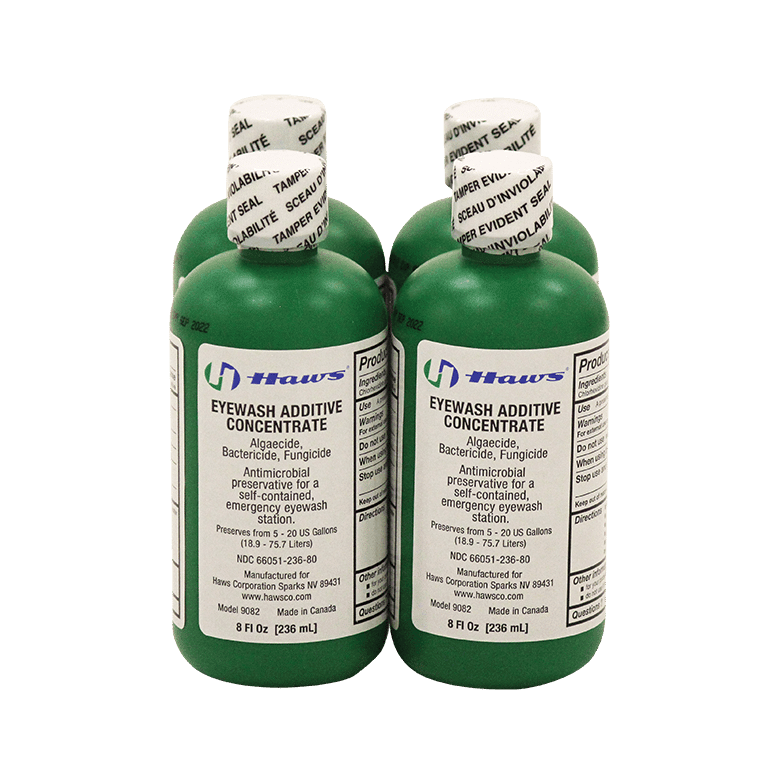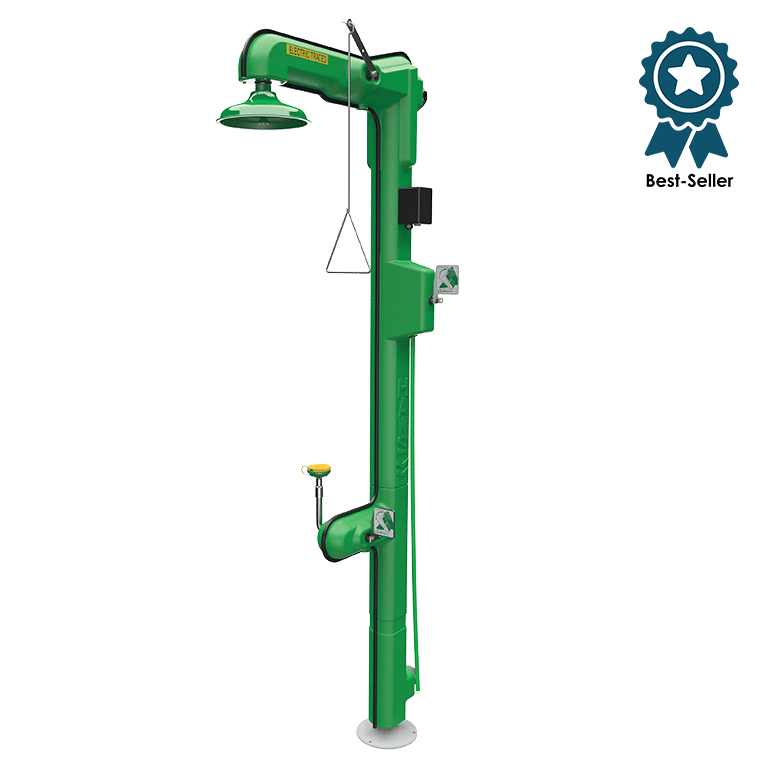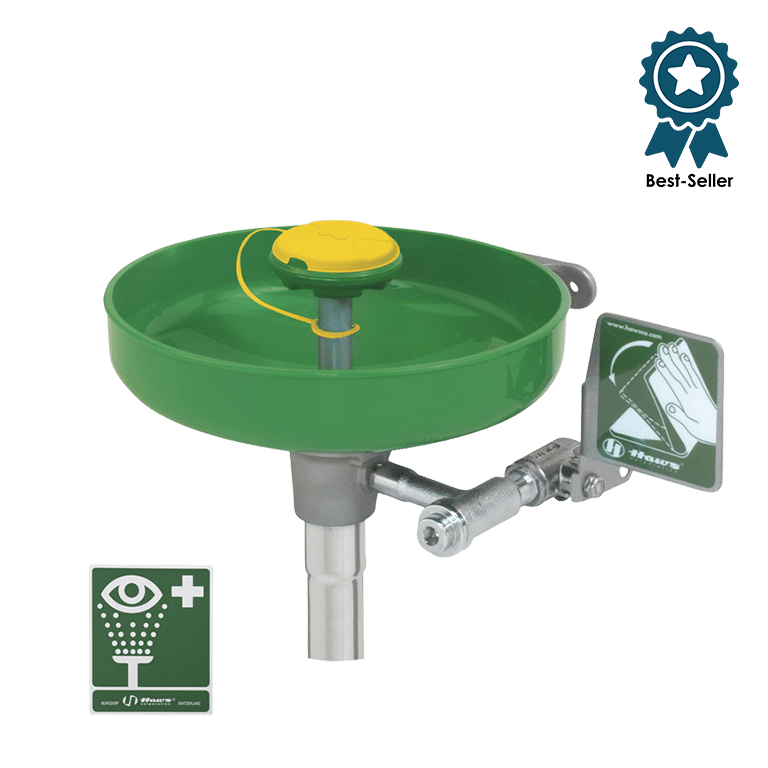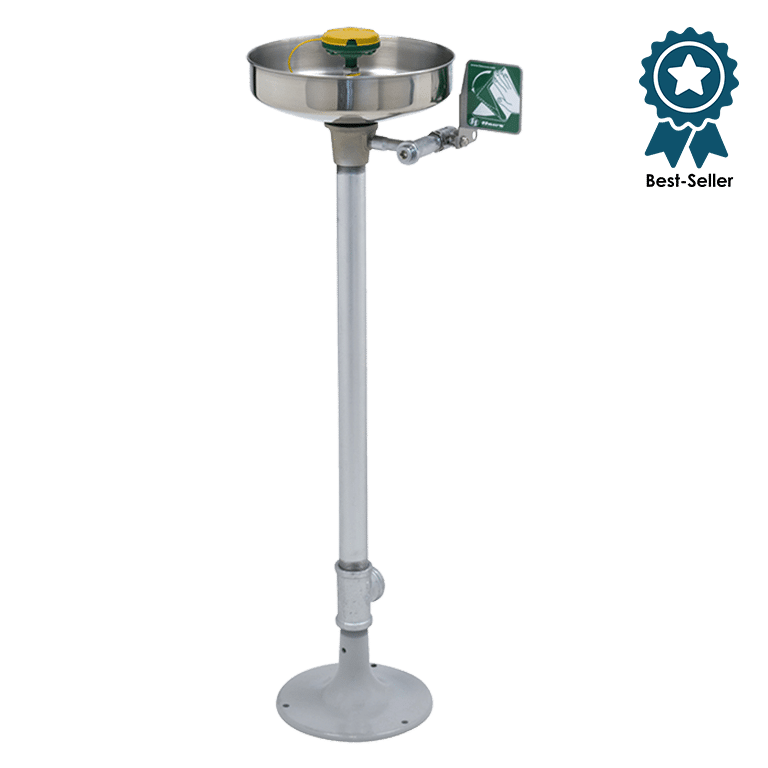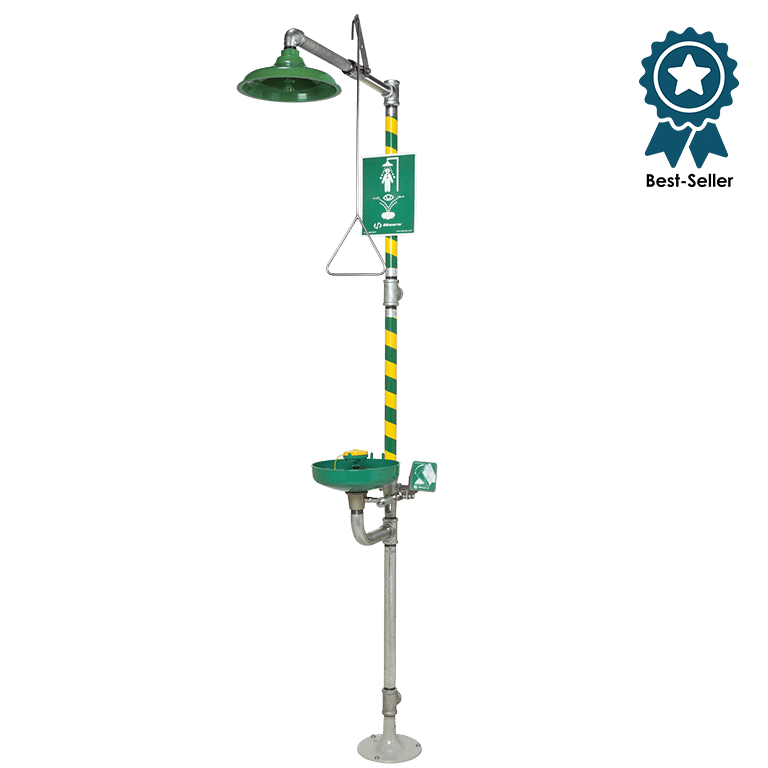21 Products
Safety Showers & Eyewashes
Filter products
FAQ - Safety Showers & Eyewashes
Regular testing is essential to ensure that safety showers and eyewash stations are fully operational when needed.
- Weekly Testing: As per ANSI Z358.1 and EN 15154 standards, a brief activation of both safety showers and eyewashes should be conducted once per week. This helps clear any sediment buildup, ensures a steady flow of water, and confirms proper operation.
- Annual Inspection: A thorough inspection should be conducted at least once a year to verify compliance with regulations. This includes checking the water temperature, flow rate, spray pattern, and overall condition of the unit.
- Water Quality & Maintenance: In areas where stagnant water can be an issue, regular flushing helps prevent bacterial growth, such as Legionella, which can pose health risks.
Regular maintenance ensures that these emergency fixtures will function effectively when required, providing workers with immediate decontamination in hazardous situations.
Proper rinsing time is critical to minimize injuries from hazardous chemical exposures or debris contamination.
- Minimum Duration: Both emergency eyewash stations and safety showers must provide a continuous flow of water for at least 15 minutes to ensure thorough flushing of harmful substances.
- Temperature Requirements: The water should be tepid (between 16°C - 38°C) to prevent further injury from extreme temperatures. Water that is too cold can cause hypothermia, while hot water can accelerate chemical reactions, worsening burns.
- Continuous Access: Once activated, safety showers and eyewashes should not require hands-on operation (e.g., a worker should not need to keep holding a valve open). This allows injured individuals to use both hands for eye rinsing or body decontamination.
For chemicals like acids or alkalis, an extended flushing time (beyond 15 minutes) may be necessary, depending on the safety data sheet (SDS) recommendations for the specific substance involved.
Quick accessibility is crucial to ensure injured workers can reach emergency decontamination equipment without delay.
- 10-Second Rule: ANSI and EN standards specify that safety showers and eyewash stations must be located within 10 seconds (approximately 15 meters or 50 feet) of a hazardous work area. This ensures that workers can reach them immediately in an emergency.
- Unobstructed Pathway: The route to the emergency station should be clear of obstacles, well-lit, and marked with clear signage so that even a worker with compromised vision (e.g., from a chemical splash) can easily navigate to it.
- High-Risk Areas: Safety showers and eyewashes are required in workplaces that handle corrosive, toxic, or high-temperature substances, such as chemical plants, laboratories, battery charging stations, pharmaceutical production facilities, and industrial sites.
Special Considerations:
- In cold environments, freeze-protected or heated safety showers should be used to prevent water from freezing.
- In high-traffic areas, units should be placed in a way that prevents accidental activation while remaining easily accessible.
- In remote locations, portable or self-contained eyewash stations may be necessary to ensure compliance with safety regulations.
Proper placement of these emergency stations significantly reduces the risk of serious injuries, ensuring that workers can receive immediate first aid in the event of an exposure.
